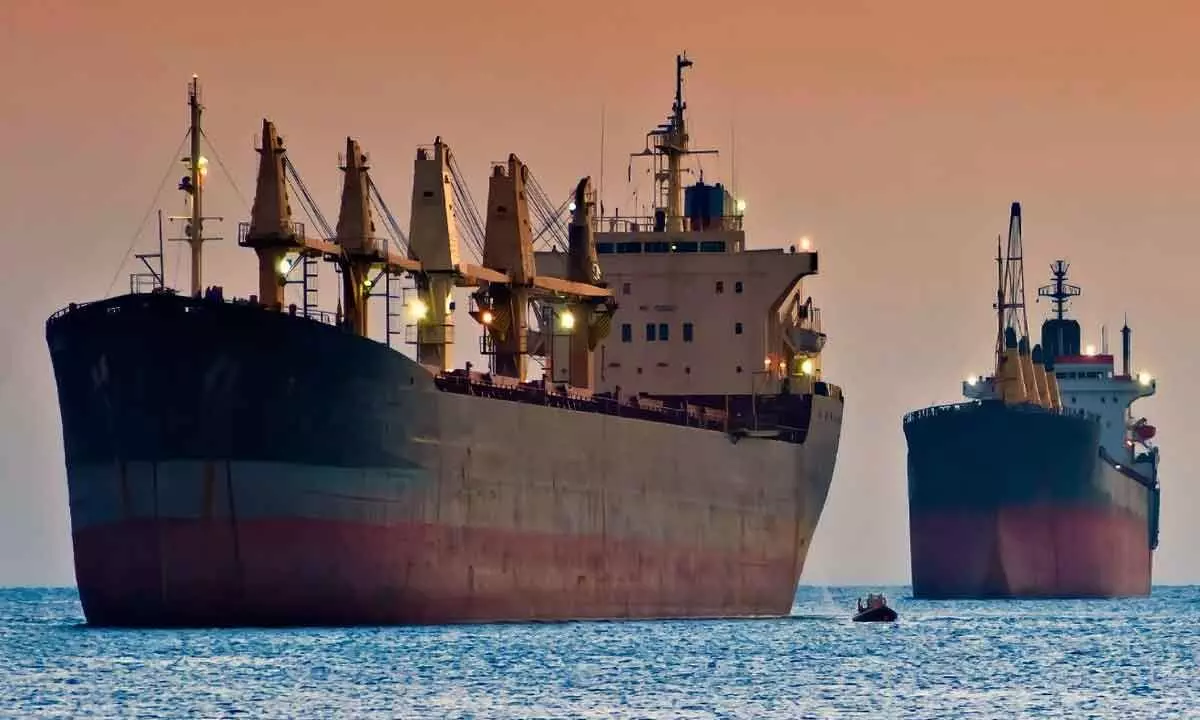Red Sea crisis: Tanker costs up 110%, transit time doubles
Due to attacks, shipping lines have reduced their movement through the Red Sea and are taking the longer route via the Cape of Good Hope, encircling the African continent
image for illustrative purpose

The incremental costs of diverting a tanker from Asia to North-West Europe via the Cape of Good Hope is accounting for an extra $932,905 per voyage while increasing transit time from 16 days to 32 days according to a report by LSEG Shipping Research.
Additionally, increased insurance premium for covering the ships travelling through the disturbed route will put an extra burden on their expenses.
As per the data available on IUMI website, global marine insurance premiums in 2022 totalled $35.8 billion. Again, as per GI Council, for FY24, as on November 2023, domestic marine premium (including marine war premium) stands at Rs 3,353 crore.
Talking to Bizz Buzz, Neerja Kapoor, CMD, New India Assurance said, “The situation in Red Sea and Gulf of Aden has been a cause of increasing concern both for war and SRCC perils as well as for risk of hijacking and piracy. This is a critical maritime route that connects the Mediterranean Sea to the Indian Ocean via the Suez Canal. Recent escalation of tension due to conflicts in the region as well as increased attacks on shipping vessels plying in the region has resulted in shipping lines either pausing their activities in the region or diverting their vessels to longer routes to avoid the conflicted areas.”
We are supporting our clients and have not issued notice of cancellations. However due to the global situation we are considering this shipping route as a high risk area with resultant higher premiums, if applicable, due to reinsurance constraints, she said.
The route starts from major Indian ports like Mumbai, JNPT, or Chennai, heads westward through the Arabian Sea, enters the Red Sea, and navigates through the Suez Canal into the Mediterranean Sea. Due to attacks, shipping lines have reduced their movement through the Red Sea and are taking the longer route via the Cape of Good Hope, encircling the African continent.
These additional costs mostly accounts for extra fuel and increases costs for an Aframax tanker by 110 per cent, while for a large container vessel it increases by 35 per cent for a voyage between Asia to North-West Europe.
Suresh Rekhawat, head-international logistics, Goenka Group said, “In case we adopt alternate routes like Cape of Good Hope in South Africa, then the vessels take 10-15 days extra to sail to their destination.”
Transits through Suez have been hugely affected following the Red Sea attacks. Average monthly transits through the Suez from June to November 2023, was seen at 1914. This dropped to 1672 in December, a 12.6 per cent drop in transits and January month-to-date transits are assessed at 947 as of January 22, which translates to a 32.6 per cent decline.
BV Krishna Rao, President, The Rice Exporters’ Association, added that the insurance premium for rice alone has gone up 40-70 per cent.
Most insurers, in fact, are issuing advisories against charting the Red Sea waters - the most convenient route for Indian trade to the West.
Daily container vessel traffic within the Red Sea have dropped by almost 60 per cent since mid-December, with the larger container ships being the most responsive to avoid the region as their transits have declined by over 80 per cent.
For those that elect to transit via the Red Sea, ships are also using AIS to broadcast deterrence messages in addition to standard security protocols.
Fabrice Maille, Global Head of Shipping at LSEG, said, “As we saw with the grounding of the Ever Given in 2021, the importance of the Suez Canal and the Red Sea to global trade cannot be understated. The impact of this conflict is therefore considerable leading to very difficult decisions to be made regarding financial costs and security risks.”
“Our customers are bringing together a vast array of data points from insurance premiums, average speed, and even AIS messages aimed at threats, in real-time, to mitigate these risks effectively. Their feedback is also helping us develop tools and solutions to help respond to future crises,” he added.

